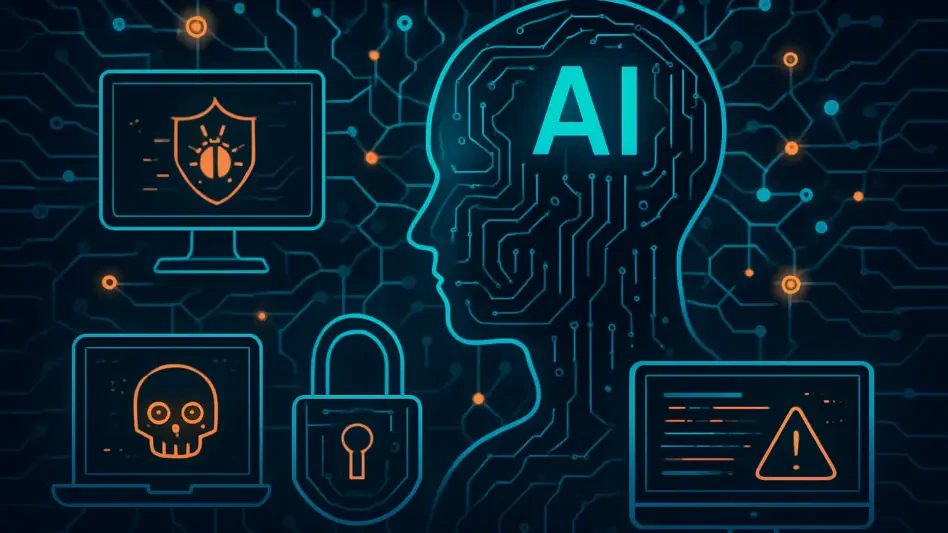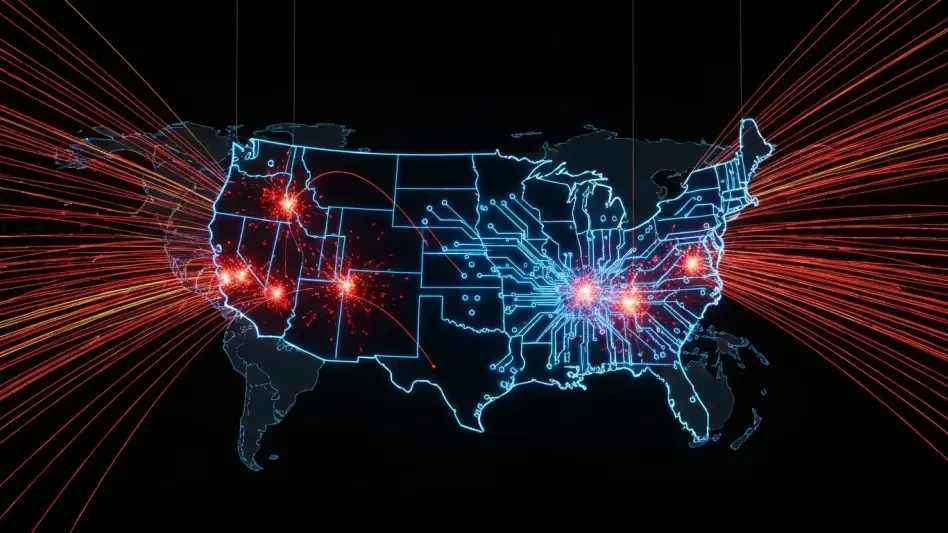In an era where cyber threats evolve at an unprecedented pace, security teams face mounting pressure to detect and respond to incidents before they spiral into catastrophic breaches, especially for small businesses with limited resources. Imagine a scenario where a small business, already stretched thin, grapples with a deluge of alerts from multiple systems, unable to discern which signals a genuine threat. This is the reality for many organizations, as alert fatigue and fragmented visibility across hybrid infrastructures compound the challenge of maintaining robust defenses. Sophos, a leader in cybersecurity solutions, has stepped up with significant upgrades to its AI Assistant, a generative AI-powered tool designed to streamline threat investigations and enhance operational efficiency. By slashing investigation times and empowering teams with actionable insights, this technology aims to redefine how businesses, both large and small, tackle the ever-growing complexity of digital dangers.
Revolutionizing Cybersecurity with AI Innovation
Enhancing Threat Detection and Response
The latest enhancements to Sophos’ AI Assistant mark a pivotal advancement in how security operations centers manage the overwhelming volume of cyber threats. Built on a refined AI model, this tool now offers intuitive natural-language interactions, allowing analysts to query complex incidents with ease and receive deeper, context-rich insights. Acting as a virtual extension of human expertise, the AI triages alerts with remarkable precision, prioritizing critical issues and suggesting remediation steps in real time. Internal benchmarks reveal that these updates can reduce investigation times by up to 40%, a game-changer for teams bogged down by manual processes. This leap in efficiency means that even organizations with limited staff can respond to threats with the speed and accuracy typically reserved for larger enterprises, leveling the playing field in an increasingly hostile digital landscape.
Beyond speed, the AI Assistant introduces an advanced binary triage feature that transforms malware analysis by identifying subtle patterns often missed by traditional scanners. This capability ensures that hidden threats are uncovered before they can inflict damage, adding a critical layer of defense. Integration with Sophos XDR (Extended Detection and Response) further amplifies its impact, as it correlates data across endpoints, networks, and cloud environments to eliminate visibility gaps. Such seamless connectivity is vital in hybrid infrastructures where disjointed systems often hinder effective monitoring. By bridging these gaps, the tool not only accelerates response times but also fosters a more cohesive security posture, enabling teams to stay ahead of sophisticated adversaries who exploit fragmented defenses.
Empowering Teams with Expert-Level Insights
For the over 26,000 customers relying on Sophos Managed Detection and Response (MDR), the AI Assistant serves as a force multiplier, bringing elite threat intelligence to organizations of all sizes. Smaller teams, often lacking the budget for dedicated specialists, can now operate with the acumen of seasoned professionals, thanks to the tool’s ability to distill complex data into actionable recommendations. This democratization of expertise ensures that critical threats are addressed promptly, without the delays that typically plague understaffed operations. The integration of insights from Sophos MDR into the AI model also means that the tool continuously evolves, learning from real-world incidents to provide increasingly tailored guidance for specific attack vectors.
Moreover, the synergy between AI-driven automation and human-led services reflects a broader industry shift toward hybrid defense models. Sophos’ recent acquisition of Secureworks underscores this trend, promising tighter alignment between technological tools and expert oversight. This combination ensures that while the AI handles repetitive tasks like alert prioritization, human analysts can focus on strategic decision-making and nuanced threat hunting. Such a balanced approach mitigates the risk of over-reliance on automation, preserving the irreplaceable value of human judgment in cybersecurity. As threats grow more intricate, this dual-layered strategy positions organizations to adapt swiftly, maintaining resilience in the face of relentless digital challenges.
Addressing Challenges and Shaping the Future
Navigating Adoption Hurdles and Privacy Concerns
While the promise of Sophos’ AI Assistant is undeniable, integrating such advanced technology into existing workflows presents notable challenges that cannot be overlooked. Concerns about over-reliance on AI loom large, as unchecked algorithms could potentially introduce biases or misinterpret nuanced threats if not regularly audited for accuracy. Additionally, adoption hurdles persist, particularly around data privacy under stringent regulations like GDPR. Organizations must ensure that sensitive information processed by the AI adheres to compliance standards, a task that can be daunting for those unfamiliar with regulatory intricacies. Sophos counters these issues with transparent documentation and comprehensive FAQs on data handling, alongside collaborative development initiatives like early access programs within its community, fostering trust and clarity.
Equally important is the need for user education to maximize the tool’s potential while minimizing risks. Many security teams may initially struggle with adapting to AI-driven workflows, especially if accustomed to traditional methods. Sophos addresses this by embedding user-friendly interfaces and providing robust support resources to ease the transition. Beta testing feedback has also played a crucial role in refining the tool, ensuring it aligns with real-world needs. By proactively tackling these adoption barriers, the focus remains on empowering users to leverage AI without compromising control or security. This balanced approach highlights the importance of blending innovation with accountability, ensuring that technological advancements serve as a reliable ally rather than a potential liability in the fight against cybercrime.
Pioneering an AI-Native Defense Landscape
The evolution of Sophos’ AI Assistant signals a transformative shift toward AI-native cybersecurity solutions, where artificial intelligence is no longer just a supplementary feature but a core component of defense strategies. This aligns with a broader industry movement to counter increasingly sophisticated threats through cutting-edge technology. By embedding AI deeply into its systems, Sophos positions itself as a trailblazer, encouraging partners to enhance managed services with these capabilities, potentially redefining service delivery models. The emphasis on contextual, tailored threat recommendations further distinguishes this tool, ensuring that responses are not generic but specific to the unique challenges faced by each organization.
Reflecting on the strides made, the enhancements to this AI tool underscore a commitment to merging innovation with practical application. Looking ahead, the focus shifts to refining these technologies further, ensuring they remain adaptable to emerging threats over the coming years. A key consideration is fostering stronger collaboration between AI systems and human expertise, striking a balance that maximizes efficiency without sacrificing oversight. Additionally, addressing privacy and compliance challenges remains paramount, as does the push for widespread education on leveraging such tools effectively. These steps pave the way for a future where cybersecurity operations are not just reactive but proactively resilient, setting a new standard for how digital defenses can evolve in an ever-changing threat landscape.








